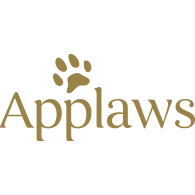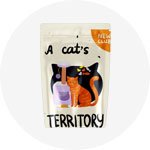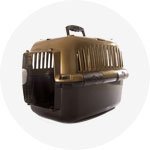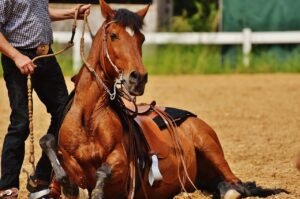How Horse Talk | Understand Horse Communication – Talk and Language
Horses are incredible animals that have been our companions for centuries. They are known for their beauty, strength, and intelligence, but communicating with them can be a challenge, especially for new horse owners. In this post, we’ll explore the nuances of horse talk, from body language to vocalizations, and provide tips for better understanding and communicating with your equine friend.
How Horse Talk?
Horses communicate with each other and with humans through a combination of vocalizations, body language, and facial expressions. Here are some ways in which horses “talk”:
- Neighing or Whinnying: This is the most well-known vocalization of horses. A neigh or whinny can express excitement, alertness, or a desire for social interaction. It can also be a way for a horse to locate or communicate with other horses.
- Snorting: Horses may snort to express surprise, excitement, or as a way to clear their nasal passages. It can also be a sign of relaxation.
- Nicker: A soft, low sound, the nicker is often a friendly greeting or a sign of recognition between horses or from a horse to a familiar human.
- Blowing: Horses may blow air forcefully through their nostrils, which can be a sign of excitement, playfulness, or a response to something surprising.
- Ears and Tail: Horses use their ears and tail to convey emotions and intentions. Forward-pointing ears often indicate attentiveness or curiosity, while pinned-back ears may signal aggression or discomfort. A raised tail can express excitement, while a tucked tail may indicate fear or submission.
- Body Language: Horses communicate a lot through body language. They may use movements such as stomping, pawing, or shaking their head to convey different emotions or needs. Subtle shifts in weight, posture, and facial expressions are also important aspects of their communication.
- Grazing or Chewing: Horses grazing or chewing can be a sign of contentment and relaxation. Rapid or excessive chewing may indicate stress or discomfort.
Understanding a horse’s vocalizations and body language is crucial for effective communication and building a strong bond between horses and their handlers or other horses. Horses are highly social animals, and their communication is nuanced and complex. Building trust and spending time observing and interacting with horses can enhance the understanding of their unique ways of “talking.”
The Basics of Horse Communication
Understanding your horse’s communication is crucial in interpreting their moods, feelings, and intentions. Here are some ways horses communicate:
1. Body Language:
Horses communicate through their body language and it is important to understand different positions, gestures and movements to decipher these messages. For example, if a horse lowers its head and stretches its neck, this is usually a sign of relaxation, but if it raises its head and pushes its ears back, it can indicate aggression or discomfort.
2. Vocalizations:
Horses also communicate through their vocalizations. They can make various sounds such as whinnies, nickers, and snorts. Whinnies are usually used to call out to other horses, while nickers are soft sounds they make when greeting someone they know. Snorts, on the other hand, can indicate irritation or anxiety.
Building a Relationship with Your Horse
Building a strong relationship with your horse is based on trust, respect, and bonding. Here are some tips to help you establish a deep connection with your equine friend:
1. Trust:
Trust is the foundation of any successful relationship with a horse. It is essential to earn your horse’s trust by being consistent, predictable, and clear in your communication. You can build trust by approaching your horse calmly, avoiding sudden movements or loud noises, and rewarding good behaviour with treats or praise.
2. Respect:
Horses are social animals that thrive on mutual respect. You should establish respectful boundaries and communicate them effectively. For instance, avoid entering your horse’s personal space without permission and avoid aggressive behaviour such as hitting or pulling on the reins.

3. Bonding:
Trust is the foundation of any successful relationship with a horse. It is important to gain your horse’s trust by being consistent, predictable and clear in your communication. You can build trust by approaching your horse calmly, avoiding sudden movements or loud noises, and rewarding good behaviour with treats or praise.
Tips for Effective Horse Talk
Effective horse talk requires being present, patient, and attentive to your horse’s needs. Here are some tips to help you communicate better with your equine friend:
1. Be Present:
Horses are incredibly perceptive animals, and they can pick up on your emotions and intentions. Being present and mindful when interacting with your horse is essential. Pay attention to your horse’s body language and respond appropriately.
2. Be Patient:
Building a relationship with a horse takes time and patience. Stay calm and consistent even in difficult situations. Avoid rushing your horse or getting frustrated when things don’t go as planned.
3. Listen:
Effective communication is a two-way street. You must listen to your horse’s signals and react accordingly. Horses are subtle communicators and it is important to pay attention to their body language and vocalizations to understand what they are trying to communicate.
Horses are wonderful creatures that have a lot to teach us about communication, trust and respect. Understanding horse talk and building a strong relationship with your equine friend will help you deepen your bond and experience the joy of horse ownership. Remember to be present, patient and attentive to your horse’s needs and you will be rewarded with a faithful and reliable companion for many years.
Common Horse Talk Misconceptions
There are many misconceptions about horse talk, which can lead to misunderstandings and communication breakdowns. Here are some common misconceptions and the truth behind them:
Horses are they Dumb Animals?
This is a common misconception that couldn’t be further from the truth. Horses are intelligent animals that can recognize faces, understand body language, and even solve problems.
Horses Only Understand Commands:
While horses can learn specific commands, they also communicate through their body language and vocalizations. It’s essential to pay attention to these cues to understand what your horse is trying to communicate.
Horses Can’t Be Trained Without Punishment?
This is another common misconception. While punishment can be used in training, it should be used sparingly and as a last resort. Positive reinforcement, such as treats or praise, is a more effective and humane training method.

Conclusion and Final Thoughts on Horse Talk:
Horse talk is a complex and nuanced language that requires patience, attention, and understanding. By learning to decode your horse’s body language and vocalizations, building a strong relationship based on trust and respect, and being present and attentive to their needs, you’ll be well on your way to effective horse communication.
Remember that horses are intelligent and sensitive animals that require careful handling and respect. With patience, consistency, and a willingness to learn, you can establish a deep connection with your equine friend and experience the joys of horse ownership. So, go ahead and start talking to your horse, and see where your newfound communication skills take you!
Frequently Asked Questions (FAQs) on Horse Talk:
-
What are some common vocalizations that horses make, and what do they mean?
Horses can hear a variety of sounds, including neighs, whines, snorts, and grunts. These sounds can convey different messages, such as expressing excitement, fear or discomfort.
-
Can horses understand human language?
Horses can learn to associate specific words or phrases with certain actions or behaviours, but they primarily communicate through body language and vocalizations. Learning to understand your horse’s nonverbal cues is crucial for effective communication.
-
How can I tell if my horse is happy and comfortable?
A happy and comfortable horse will generally exhibit relaxed body languages, such as a lowered head, loose muscles, and a soft expression. They may also show signs of contentment, such as licking and chewing, or nuzzling.
-
What are some common body language cues that horses use to communicate?
Horses use a variety of body language cues, such as ear position, tail movement, facial expressions, and overall posture, to convey their thoughts and feelings. For example, pinned-back ears and a raised tail can indicate aggression or fear, while a relaxed posture and soft expression can indicate contentment.
-
How can I build trust and respect with my horse?
Building trust and respect with your horse takes time, consistency, and patience. It’s essential to establish clear boundaries and expectations while also rewarding positive behaviours with treats, praise, or affection. Spending quality time with your horse, such as grooming or hand-grazing, can also help strengthen your bond.
Recommended:




























